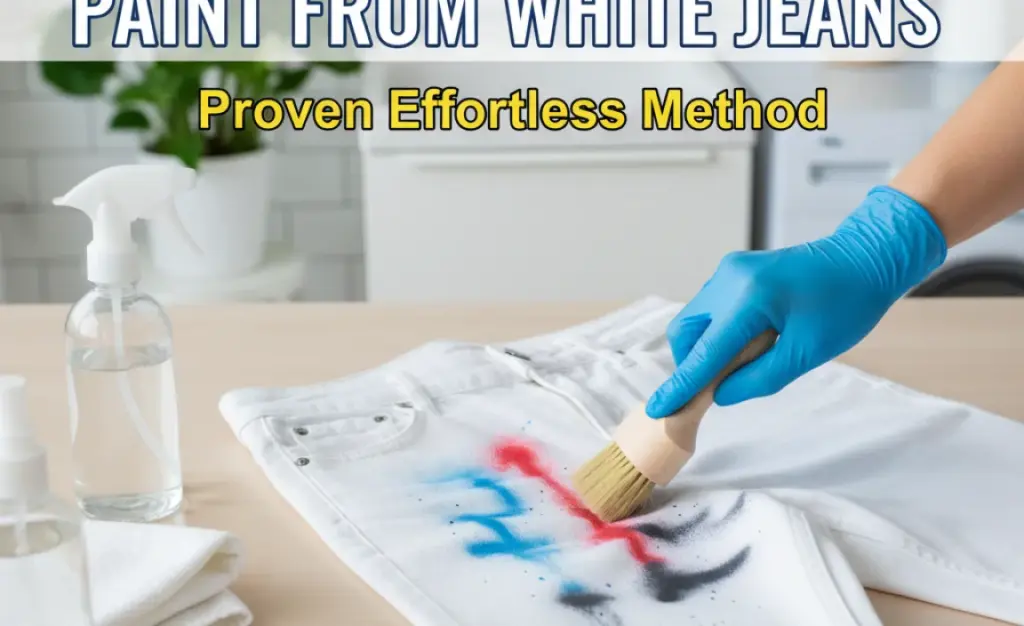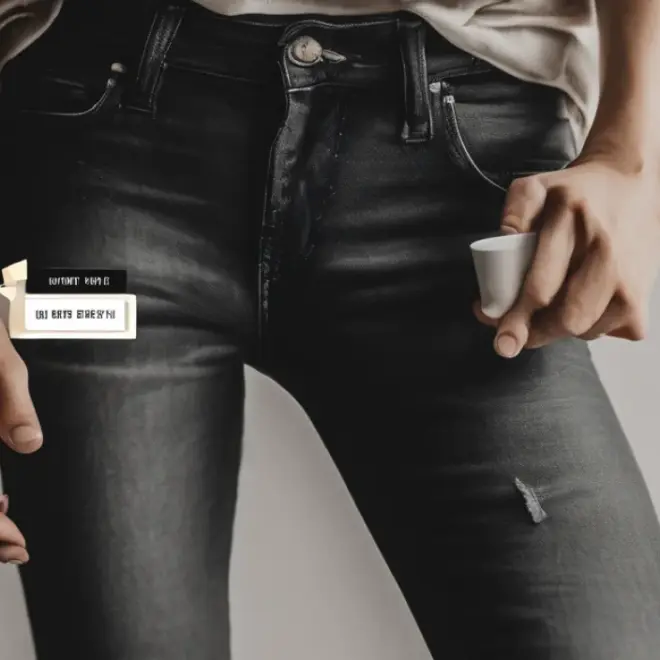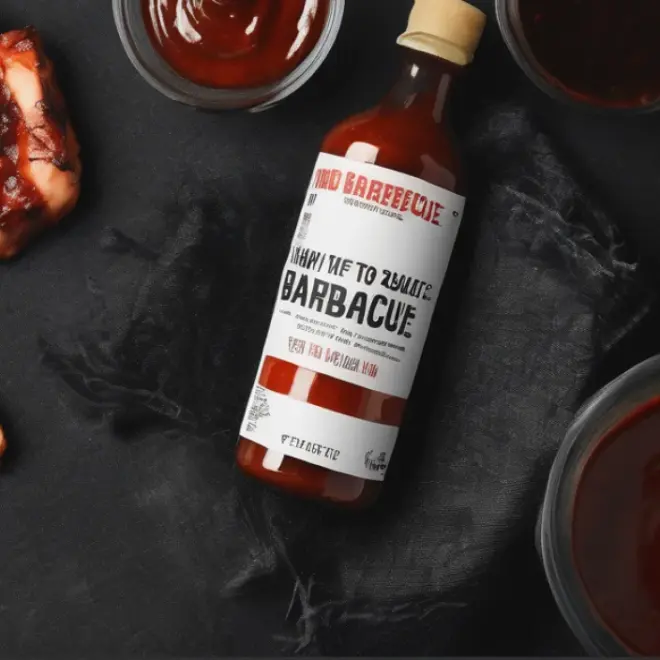Quick Summary: To remove spray paint from white jeans effortlessly, act fast! Gently blot the fresh paint with a clean cloth. For dried paint, use a solvent like rubbing alcohol or a specialized stain remover. Always test in an inconspicuous area first and follow with a regular wash.
Oh no, those pristine white jeans have an unwelcome splash of spray paint! It happens to the best of us, whether it’s a DIY project gone slightly awry or an accidental brush against a freshly painted surface. White fabric can feel like a magnet for stains, and spray paint is notoriously stubborn. But don’t despair! Getting your favorite white denim back to its bright, clean state is absolutely achievable with the right approach. This guide will walk you through effective, simple methods to tackle spray paint stains, making them seem like they never happened. We’ll cover everything from fresh splatters to dried-on mishaps, ensuring you can confidently restore your jeans.
Understanding Spray Paint and White Denim

Spray paint is designed to be durable and adhere strongly to surfaces, which is exactly why it’s challenging to remove. It contains pigments, binders, and solvents that create a tough, often permanent finish. White denim, while fashionable, offers no pigment to hide the stain and can be susceptible to discoloration from harsh cleaning agents if not handled carefully. Thankfully, the fibers in cotton denim are generally robust enough to withstand common stain-removing solutions when used correctly.
When to Act: The Magic of Speed
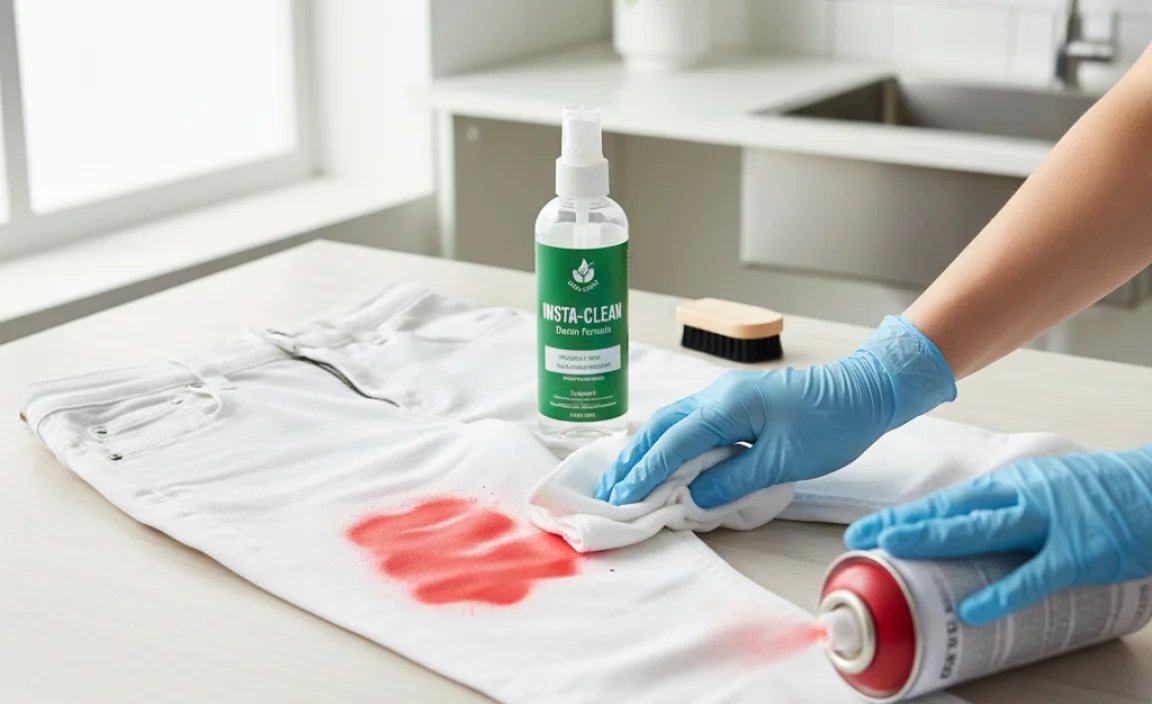
The single most crucial factor in successfully removing spray paint from white jeans is the timing. Fresh paint is significantly easier to lift than paint that has had time to dry and cure. If you notice the paint immediately, your chances of a complete removal are much higher, and the process will be far less labor-intensive.
Dealing with Fresh Spray Paint
If you’ve just noticed the paint splatter, don’t rub it! Rubbing will push the paint deeper into the fabric fibers, making it harder to remove and potentially spreading the stain. Instead, follow these immediate steps:
- Blot Gently: Using a clean, white cloth or paper towel, gently blot the wet paint. Work from the outside of the stain inward to avoid spreading it. The goal is to absorb as much of the wet paint as possible.
- Avoid Heat: Do not apply heat in any form (like from a dryer or hot water) until you are sure the stain is gone. Heat can set the paint stain permanently.
- Pre-treat if Possible: If you have plain dish soap or a mild laundry detergent handy, you can carefully apply a tiny amount to the blotched area and gently work it in with your fingers or a soft cloth. Let it sit for a few minutes.
Effective Methods for Dried Spray Paint
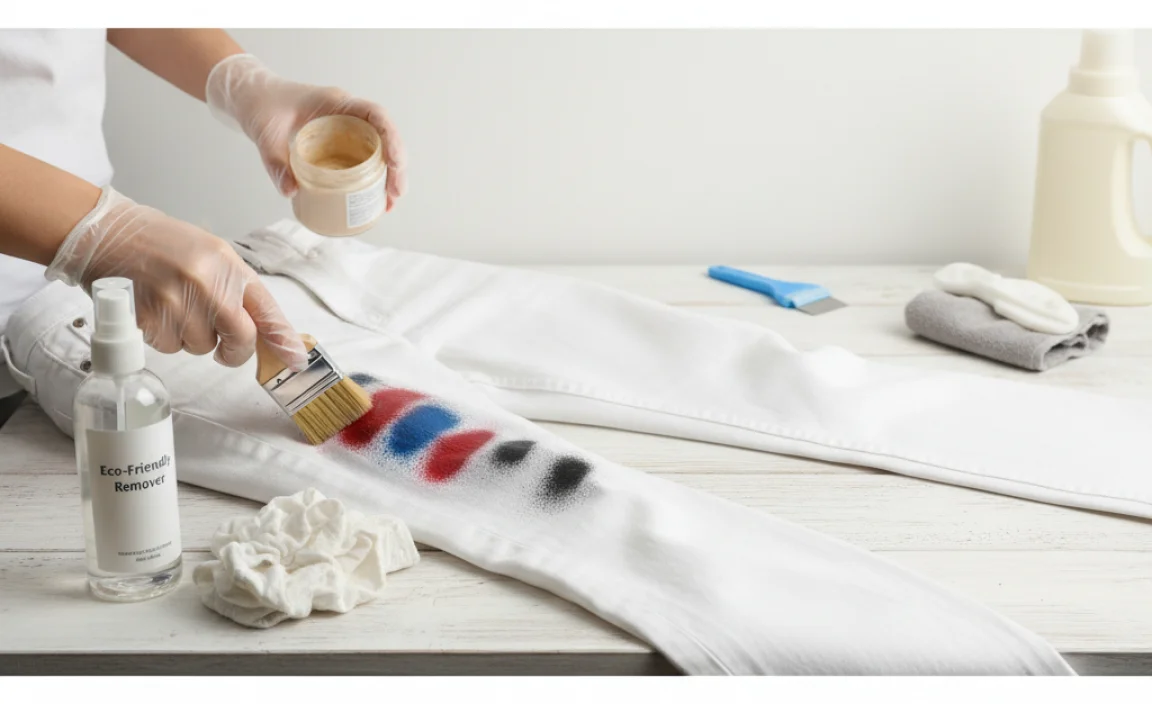
Dried spray paint requires a more targeted approach, often involving solvents that can break down the paint’s binder. Always remember to test any cleaning solution on an inconspicuous area of the jeans first, such as an inside seam or hem, to ensure it doesn’t damage or discolor the fabric.
Method 1: Rubbing Alcohol (Isopropyl Alcohol)
Rubbing alcohol (70% or 91% isopropyl alcohol) is a common household item that can be surprisingly effective at dissolving many types of spray paint. It’s generally safe for most denim fabrics.
Supplies Needed:
- Rubbing alcohol
- Clean white cloths or paper towels
- Cotton balls or swabs (optional)
- A clean basin or sink
- Your regular laundry detergent
Step-by-Step Guide:
- Protect Your Workspace: Lay down old towels or newspaper to protect the surface you’re working on from the alcohol.
- Test First: Apply a small amount of rubbing alcohol to an inside seam of your jeans with a cotton swab. Let it sit for a few minutes, then blot with a clean cloth. Check for any color lifting or fabric damage before proceeding.
- Saturate the Stain: Dampen a clean white cloth with rubbing alcohol. You can also use cotton balls or swabs for more precise application, especially on smaller spots.
- Blot and Lift: Gently blot the spray paint stain with the alcohol-dampened cloth. You should see the paint start to transfer onto the cloth. Keep moving to a clean section of the cloth as it picks up the paint. For tougher spots, you can very gently dab or work the alcohol in a circular motion.
- Rinse and Repeat: Rinse the treated area with cool water. If the stain is lifting but not completely gone, repeat the blotting process with fresh alcohol. Be patient; this may take several applications.
- Wash as Usual: Once you’ve lifted as much paint as possible, apply a small amount of liquid laundry detergent directly to the treated area. Gently rub it in. Wash the jeans in your washing machine on a cold or cool setting with your regular detergent.
- Air Dry: Crucially, air dry your jeans completely. Do not put them in the dryer. Check the stain once dry. If any trace remains, repeat the alcohol treatment and washing process. Heat from the dryer will set any remaining stain.
Method 2: Specialized Stain Removers
For particularly stubborn or oil-based spray paints, a commercial stain remover designed for tough stains might be necessary. Look for products that specifically mention removing paint or solvent-based stains.
Popular Options and How They Work:
- Enzyme-Based Cleaners: These break down organic stains, and some can be effective on certain paint components.
- Solvent-Based Removers: These are designed to dissolve tough residues like paint, grease, and ink. Always ensure the product is safe for fabric. Resources like the EPA’s guide to green cleaning offer insights into effective cleaning agents, although you’ll want to focus on targeted paint removers for this specific issue.
Supplies Needed:
- Chosen commercial stain remover
- Clean white cloths or specified applicator
- Gloves (recommended for strong solvents)
- A clean basin or sink
- Your regular laundry detergent
Step-by-Step Guide:
- Read Product Instructions Carefully: Each stain remover is different. Always follow the manufacturer’s directions precisely.
- Test the Product: Apply a small amount to an inconspicuous area of the jeans, wait for the recommended time, and rinse. Check for any adverse reactions on the fabric.
- Apply the Remover: Apply the stain remover directly to the painted area. Some products require you to dab it on, while others can be sprayed. Ensure good ventilation if using a strong solvent.
- Let it Work: Allow the product to sit for the duration specified on the packaging. This contact time is crucial for breaking down the paint.
- Gently Agitate: Some products recommend gently rubbing the fabric together or using a soft brush to help lift the stain.
- Rinse Thoroughly: Rinse the treated area with cool water.
- Pre-treat and Wash: Apply your regular liquid laundry detergent to the area and wash the jeans in the washing machine on a cold or cool cycle.
- Air Dry: As with the alcohol method, air dry the jeans completely before checking the results. Repeat if necessary.
Method 3: Hairspray (A Classic Trick)
Hairspray, particularly older aerosol formulas containing alcohol, can sometimes work reactively on fresh or slightly dried spray paint. It’s a bit of a hit-or-miss method but worth a try if you have it on hand and the paint is relatively new.
Supplies Needed:
- Aerosol hairspray (ideally alcohol-based)
- Clean white cloths or paper towels
- Rubbing alcohol (as a follow-up)
- Laundry detergent
Step-by-Step Guide:
- Spray Generously: Hold the can of hairspray a few inches away and spray directly onto the paint stain, saturating it.
- Let it Sit: Allow the hairspray to sit on the paint for about 5-10 minutes.
- Blot the Paint: Use a clean white cloth to blot the softened paint. You should see it begin to transfer.
- Follow with Alcohol: If the paint starts to lift but isn’t completely gone, follow up with rubbing alcohol as described in Method 1. This combination can be quite effective.
- Wash and Air Dry: Wash the jeans as usual and air dry.
Other Considerations and Less Common Methods
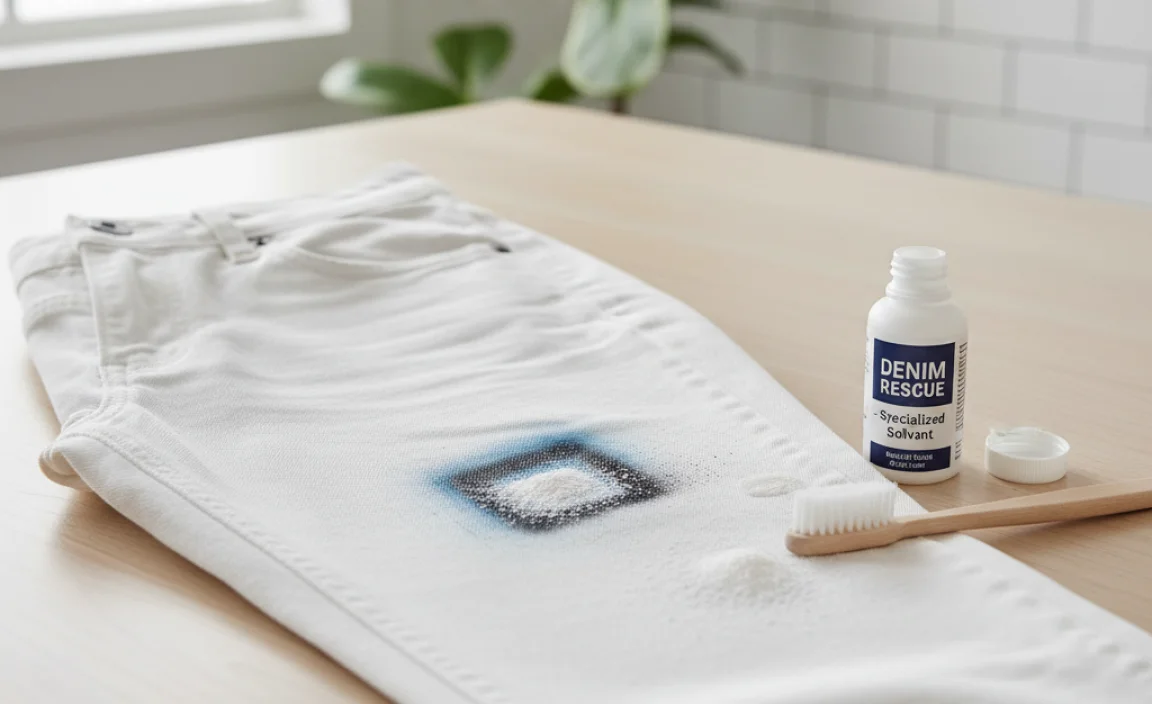
While rubbing alcohol and commercial removers are the most reliable, a few other options might be mentioned or considered. Always prioritize safety and fabric integrity.
Nail Polish Remover (Acetone)
Pure acetone can dissolve some spray paints. However, acetone can also damage certain synthetic fibers and may affect the dye of some fabrics, even white ones. If considering this, test thoroughly on an inside seam first. Be aware that many nail polish removers are now acetone-free, which would be ineffective. Use with extreme caution and excellent ventilation.
WD-40
WD-40 can sometimes break down oil-based paints. Apply to the stain, let it sit, and then blot. You will absolutely need to pre-treat the WD-40 stain with a heavy-duty degreaser or laundry detergent before washing, as WD-40 itself can leave an oily residue. Again, testing is paramount.
Baking Soda Paste
For very light, superficial marks, a paste of baking soda and water can sometimes help lift minor paint flecks. Make a thick paste, apply it to the stain, let it dry, then gently brush it off before washing. This is generally less effective for typical spray paint stains that have embedded.
When assessing cleaning methods, consider that effectiveness can vary greatly depending on the type of spray paint (e.g., enamel, latex, oil-based) and the specific formulation of the cleaning product. For reference on different cleaning agents, the American Cleaning Institute offers general information on how various cleaners work.
A Comparison of Methods

To help you choose, here’s a quick comparison of some common methods:
| Method | Best For | Potential Risks | Ease of Use |
|---|---|---|---|
| Rubbing Alcohol | Most spray paints, relatively fresh or dried | Can dry out fabric if overused; test for colorfastness on non-white denim | High |
| Commercial Stain Remover | Stubborn or oil-based paints | Some can be harsh; always follow instructions; potential for fabric damage if misused | Medium to High (depends on product) |
| Hairspray | Very fresh, water-based paint | Effectiveness varies greatly; may not work on dried paint | High |
| Acetone (Nail Polish Remover) | Tougher, dried paints (use with extreme caution) | Can damage synthetic blends, affect fabric dye; strong fumes | Low to Medium (due to risk) |
| WD-40 | Oil-based paints | Can leave grease stains if not properly cleaned afterward; strong odor | Medium (requires follow-up treatment) |
Preventing Future Spray Paint Mishaps
While accidents happen, some simple precautions can help minimize the risk of getting spray paint on your white jeans:
- Wear Old Clothes: When doing any painting or DIY projects, always opt for old, disposable clothing.
- Cover Up: Wear an apron or a dedicated drop cloth/painting smock over your regular clothes.
- Create a Safe Zone: Ensure your painting area is well-ventilated and free of items you don’t want to get paint on, including furniture and clothing you plan to wear soon.
- Be Mindful of Surroundings: When out and about, be aware of freshly painted surfaces or areas where spray paint might be in use.
Frequently Asked Questions (FAQ)
Q1: Can I use bleach to remove spray paint from white jeans?
A1: While bleach is a powerful whitener, it’s often not effective on set-in paint stains and can sometimes even cause yellowing or damage to the fabric fibers if not used correctly. It’s better to try a solvent-based cleaner first.
Q2: How long do I have to remove spray paint before it’s permanent?
A2: The sooner you treat a spray paint stain, the better your chances. Fresh paint can often be removed completely. Dried paint is more challenging and might require multiple treatments or a stronger solution. Don’t wait too long; act as soon as you notice it.
Q3: Will dry cleaning help remove spray paint stains?
A3: Professional dry cleaners have access to specialized solvents and techniques that can tackle difficult stains, including paint. If the DIY methods aren’t working, consult a reputable dry cleaner and point out the exact stain.
Q4: My white jeans are slightly discolored after trying to remove paint. What can I do?
A4: This can happen if the cleaning agent was too harsh or if the paint itself contained a strong dye. You can try a pre-treatment with a color-safe oxygen bleach intended for whites or a commercial stain remover designed for dye transfer. Always test first.
Q5: Is it safe to use any of these methods on colored jeans?
A5: While this guide is for white jeans, these methods (especially rubbing alcohol) can sometimes be used on colored denim. However, they carry a higher risk of fading or removing the dye. Always test in a very discreet area first and proceed with extreme caution.
Q6: After washing, there’s still a faint outline of the paint stain. What’s next?
A6: This means the stain wasn’t fully removed before washing. Do not dry the jeans in a machine. Repeat the chosen treatment method (like rubbing alcohol or a specialized remover) on the faint stain, and then re-wash and air dry. Patience is key.
Conclusion
Accidental spray paint on your favorite white jeans doesn’t have to be a fashion disaster. By acting quickly and employing the right method—often a gentle blotting for fresh paint or a strategic application of rubbing alcohol or a specialized stain remover for dried paint—you have a really good chance of restoring your denim to its former glory. Remember the golden rules: test first, be patient, and always air dry until you’re certain the stain is gone. With these straightforward steps, you can regain confidence in your ability to tackle tough stains and keep your wardrobe looking its best.


